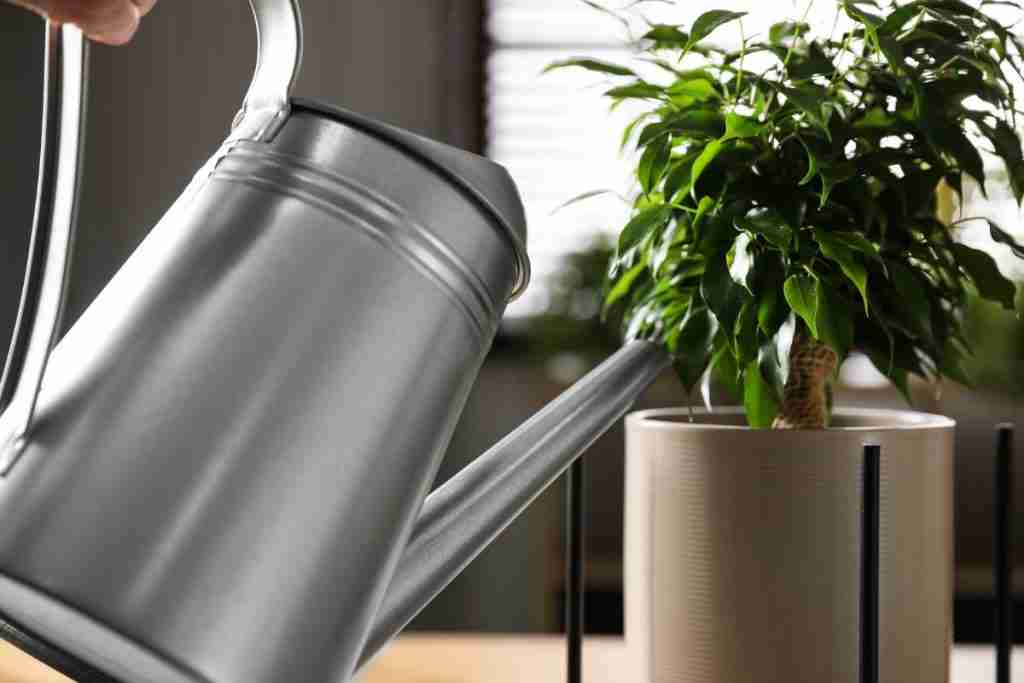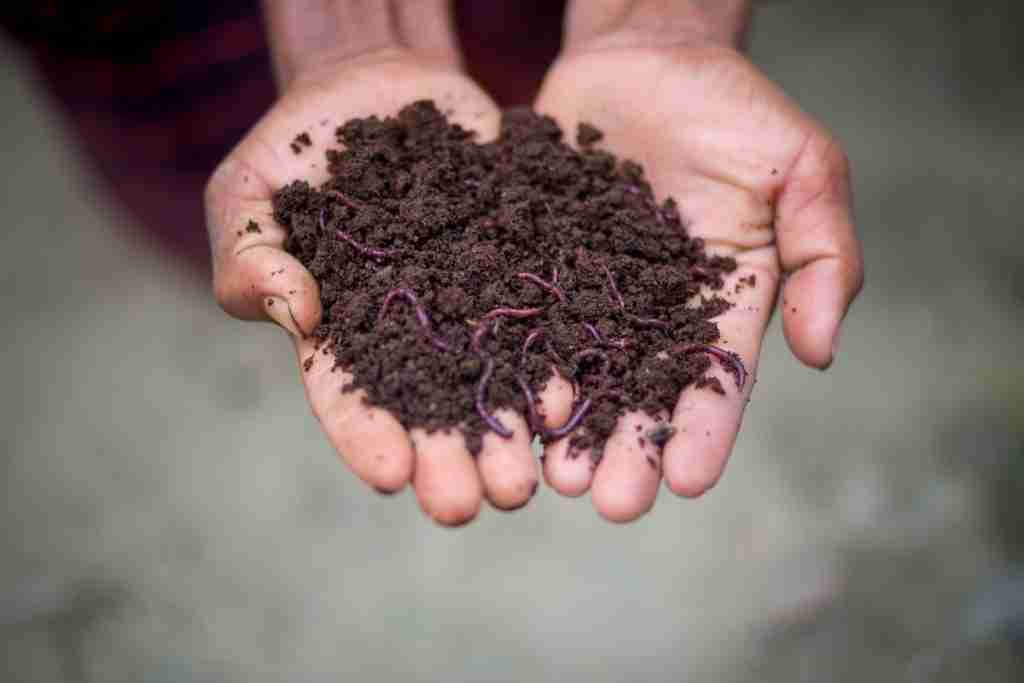
The best way to optimize the growth of an indoor plant is by providing plenty of quality plant fertilizer to the potting soil.
Anyone with experience growing plants knows just how important fertilizer can be. It is the way we feed our gardens to ensure they have all the essential nutrients to develop and continue to thrive.
Five ways to successfully feed house plants include keeping a routine schedule, choosing quality brands, providing plenty of water, factoring in the elements, and always following the instructions.
Fertilizer is particularly important when growing house plants because they do not get abundant nutrients in the soil. For the best results when fertilizing your indoor greens, follow the simple steps below.
Table of Contents
1. Keep a Strict Schedule
Most people know just how important it is to water your plants on a strict schedule. However, they tend to forget it is just as important to ensure you are feeding them often as well.
Granted, you won’t be fertilizing your flowering plants nearly as much as you will be watering them, but keeping the soil full of much-needed nutrients is key to a healthy garden.
While each specific houseplant fertilizer will be a little different when it comes to the frequency of use, typically indoor plants require a little food every couple of months.
2. Choose the Best Option for Your Plants
The market is full of fertilizers and indoor plant food options you can choose from when preparing your plants for optimal growth, and most are probably pretty decent options. However, you should never settle for less than the best fertilizer when it comes to the quality of food you give to your indoor garden.
When purchasing houseplant fertilizer, check the labels and ensure you are getting all of the nutrients your plants require (nitrogen, phosphorus, and potassium, as well as a few others).
After that, there are a few other things you may want to consider.
Synthetic or Organic?
Synthetic fertilizers are lab-created products that will give your indoor plants the nutrients they need with a much more affordable price tag.
Organic fertilizer is a natural way to feed your plants and is a safer alternative. However, you are going to pay more for these products.
Liquid, Granular, or Slow-release Fertilizer?
There are three types of fertilizers you can choose from that provide nutrients to the plant in different ways.
- Liquid fertilizer will absorb into the potting soil quickly and feed the plants right away.
- Granular fertilizer works similarly to liquid plant food. However, it starts as a solid pellet mixed into the potting mix and dissolves once it comes into contact with water.
- Slow-release fertilizers come in many options such as sticks, tablets, etc. These are plant food products placed into the soil that slowly release the nutrients they need over time.
There is no “one size fits all” for fertilizing your house plants. Choose the product that works best for you and that you feel the most comfortable using.

3. Provide Plenty of Water
What is one thing all fertilizers have in common? How it is carried to the plant’s root system. Water is crucial when it comes to adding fertilizer to help provide adequate nutrition to your indoor garden.
Aside from delivering the fertilizer to your plants, water will also help keep them healthy and will help them cope with the stress of fertilizing.
4. Be Careful When Temperatures Change
Did you know that plant fertilizer causes stress and fatigue to plants? Not many people do, but it is true, and it can actually cause more harm than good if you decide to feed your plants when the temperatures get too hot or too cold.
Fertilizing puts a little extra stress on your potted plant already, making them more susceptible to other environmental issues outside of your control. So it is best to keep the feedings set for days when the air temperatures are just right and the sun isn’t so bright.
Most indoor plants can easily bounce back from one stressful situation, but two might be a little more complicated.
5. Watch How Much You Offer
Too little is always better than too much. Technically, plants can grow indoors without adequate fertilizer if they have the proper soil, lighting, temps, and water. While they may not look their best, they will still survive.
On the other hand, providing too much fertilizer to your indoor garden can have catastrophic results. Indoor plant fertilizer contains ingredients that can be very harsh on your flowers, even causing fertilizer burn and weakness.
| Symptoms of too little fertilizer | Symptoms of too much fertilizer |
| Plants are droopy Stems are not as green Growth is stunted Leaves are discolored Test your soil | Roots are rotting (black or brown in color) Growth is stunted or stopped Leaves are wilting Lower plant leaves are yellowed Crusty fertilizer build-up on soil surface |
Should You Make Your Own Fertilizer?
Have you ever considered creating your own compost pile to feed your indoor plants? There are many benefits to doing this, aside from the fact that it is free.
Compost contains all-natural ingredients, and you have total control over what goes into fertilizing your houseplants. You can use scraps from around the house and mix them into a large container of soil, combining all the essential nutrients to encourage healthy plant growth.
Things to add to home compost piles:
- Grass clippings
- Wood shavings
- Raked tree leaves and broken twigs
- Vegetable and fruit waste, skins, and peels
- Old newspapers
- Cardboard (without inks or lamination)
- Printer paper
- Most disease-free yard waste
- Animal manure (from herbivore animals like rabbits and cows)
- Sawdust
How to Make a Compost Pile to Provide the Best Fertilizers

If you are interested in creating your own compost pile to make organic fertilizer that will aid in the development of your indoor houseplants, here are the steps you will need to follow to be successful.
- Find the perfect location. Whether your compost is going to a spot dug up in the backyard or a dedicated compost bin, you want to ensure it is in a safe location where it won’t get in the way and won’t stink up your home.
- Ensure your compost is 50% green material (e.g. grass clippings and coffee) to get nitrogen, and 50% brown material (e.g. dried leaves and cardboard) to get carbon.
- Next, you want to layer your pile, start with your carbon materials, then the green, then the topsoil. You should also add in some larger twigs and sticks to provide aeration to the mixture.
- Once you have plenty of material, add a little water and mix your pile up every so often to keep the process moving along.
You can keep the same pile for long periods as long as it is properly maintained. Try to always add your food items to the top of your compost to keep rodent activity down as much as possible.
Things You Should Never Add to a Compost Pile
You can place a lot of table scraps and yard waste into your compost pile to gain plenty of natural nutrition. However, some items are not good for this task and could potentially be dangerous.
- Milk and dairy products
- Meat
- Weeds
- Plants with pesticides
- Pet manure
- Plant roots
- Plastics
- Fats and oils like mayonnaise and peanut butter
Summing Things Up
Fertilizer is an important part of indoor plant care. It is crucial to your plant’s ability to thrive inside the home in unnatural conditions. The best way to fertilize your home garden is to choose the best option for your specific situation. Since no two plants are alike, their care will look a little different.
